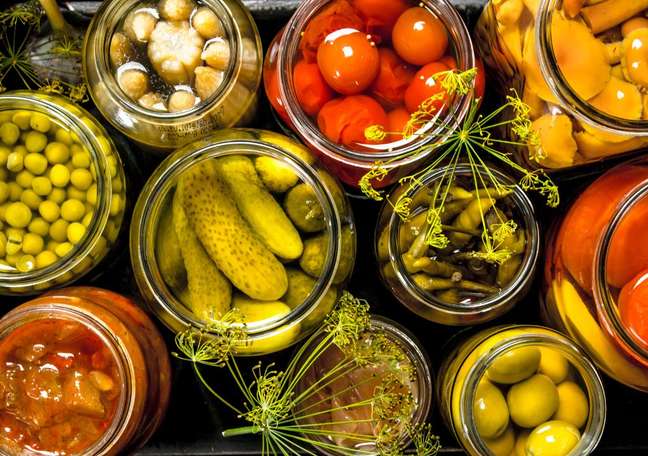
Pickles are a very versatile food! Excellent in sandwiches, in salads, as an aperitif in homemade breadsticks or even with meats, this delicious preserves will surprise all palates. By the way, did you know that “pickle” is the name given to the type of pickle and not to a vegetable?
Yes, this is a very common misconception: pickle – which comes to mind – is basically a pickled cucumber. Also, the pickle doesn’t have to be done with cucumbers only, as it can be made with carrots, broccoli, mushrooms, radishes and onions, for example.
Those who love the flavor, can still use the pickle to enrich the sauces! To do this, simply work or liquefy the pickle or canned water with the other ingredients of your favorite sauce. For example, for a refreshing yogurt salad dressing, collect 1 jar of plain yogurt, mint leaves and 1 tablespoon of pickles. Then, put everything in a blender and serve cold. Delightful!
See how the pickle is super versatile? Find out now how to choose the best cucumber for pickling and how to prepare it successfully:
How to choose cucumber to make pickle?
Basically, choose based on your personal taste and which type is easier to find in your area, as any cucumber can be used to make a pickle! If it’s your first time and your cucumber knowledge isn’t that vast, bet on “canned” cucumber.which is small and can be used “whole” in the pickle.
How long does the pickle last?
Handcrafted, the pickle must be consumed inside 7 days after fermentation, when stored in the refrigerator. It is important to note that canning can last longer, but homemade canning becomes very risky if some hygienic steps are not followed carefully.
In some regions where the climate is warmer, the canning time may be shorter. For those who have more experience in preparation and a super efficient refrigerator, it is possible to obtain up to 30 days of validity in refrigeration.
Step by step to prepare the pickles
1. Sterilize tools
Start by preparing the utensils to use and, most importantly, the container that will store your pickle. To do this, just boil the water and pour it all over the jar and lid. Therefore, be very careful not to come into contact with the inside of the glass and contaminate it.
2. Select the cucumbers and sanitize them
For the cucumber cleaning process, wash them one by one under running water and then soak them in the sanitizing solution for 15 minutes before rinsing again under running water. By the way, this sanitizing solution can be bleach, sodium hypochlorite or 3% hydrogen peroxide. Then dry the cucumbers well on a clean cloth or napkin to prevent moldy.
3. Cut and prepare the ingredients
Cut the ends of the cucumber and discard. For canning, it is interesting to cut the vegetable very thin with a sharp knife, processor or mandolin. Finally, book.
Then prepare the brine. This small mixture of water and salt is very important for preserving the preserve and should be enough to keep the cucumber completely submerged. Also, those who love a bittersweet touch can add a little sugar to the brine; and lovers of the more acidic flavor can substitute half the amount of water with the vinegar of their choice. Finally, cover the glass and shake well to mix the ingredients.
4. Wait for the fermentation period
Now you need to exercise your patience a little. Leave the preserves tightly closed at room temperature in a cool and ventilated place for 4-5 days. During this time the pickle will “ferment” and its color will change.
5. Take some precautions while consuming
After fermentation, the preserves must be stored in the refrigerator for consumption for a period of time. maximum 7 days. Remember that, being an artisanal product, the faster the consumption, the better! This is because each place has a different climate and, consequently, the fermentation processes can vary. Therefore, there are variations not only in flavor, but also in shelf life.
In addition, it is important to use a clean utensil whenever handling preserves. By avoiding contamination, therefore, you will have a tasty and healthy pickle to enjoy in your meals.
Cooperation: Gisele Haiek, nutritionist and specialist in Hygienic Sanitary Control of Food
+The best content in your email for free. Choose your favorite Earth Newsletter. Click here!
Source: Terra
Benjamin Smith is a fashion journalist and author at Gossipify, known for his coverage of the latest fashion trends and industry insights. He writes about clothing, shoes, accessories, and runway shows, providing in-depth analysis and unique perspectives. He’s respected for his ability to spot emerging designers and trends, and for providing practical fashion advice to readers.







